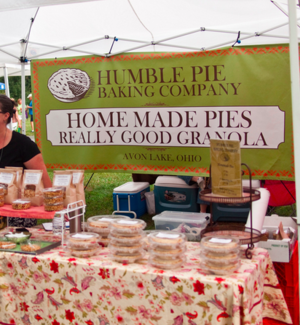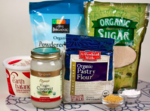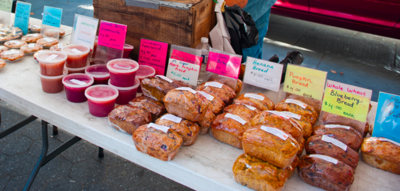
A home-based food business is the making and selling of food from your own home. While this is a good option for many home-based workers, there are restrictions on what can be done in many jurisdictions where food, hygiene and health and safety laws regulate the production of food made for sale from the home environment.
Things to consider when setting up a home-based food business
Consider the basics before deciding that a home-based food business is the right income-earning activity for you. Here are some things to work through as you reach this decision:
- Have you considered what sort of food product or products you'd like to make? This involves knowing your own skill level (be honest about how good you are producing this food), the availability of the resources needed to make the food product(s) and the viability of the costs of making it and the likely sale price customers will be willing to pay.
- How large will your home-based food business be? Will you sell from the farm gate, door-to-door, at a local market stall, on a street corner, from a food van, to local shops/restaurants/cafes or will you try to run an even larger business via a supply chain arrangement to a supermarket? Or, maybe you can even sell online. In many cases, starting off small is sensible, after which you can gauge the viability or otherwise of extending your operation.
- How will you get your food resources for producing the home-based food? Will you grow it yourself, arrange with neighbours to purchase their farm goods, buy in from a local co-operative, local stores, supermarket, from online, etc.? To keep costs down, look for wholesale distributors if you need to buy in supplies from commercial distribution chains when your local co-operative cannot meet your needs (although, always ask the co-operative if it can get the items in for you).

Organic goods will cost more if that's your angle. Find a wholesale supplier to keep costs down.
- Think about who your customers will likely be. If they're locally based, can they come to you or do you need to go to them? Are they likely to be further afield, and if so, what transport arrangements will you be able to put in place to get the food to them in a hygienic, safe and intact way?
- Where will you produce the food? This decision will be influenced by what local regulations on food production require. However, you also need to consider the size of the production process and whether your kitchen/smokehouse/drying facilities/storage areas, etc., are sufficient to meet the needs of your food production. In some cases, you may need to make changes to rooms in your home or other associated buildings and this will require additional funds. If you are going to be making food in the same place as you make meals for the family or household, is this going to be doable or will it be too crowded? Also consider that in many jurisdictions, you will be required to get exemptions for running a food production business using a home kitchen in use for home activities, that will require you to demonstrate how you deal with foods meant for sale and foods meant for family/the household, how sick family/household members and pets are kept out of the food preparation space, and so forth.
- Have you considered who else in your area or food type is producing homemade food as you intend to do? Are they going to be crowding out the market with an already established and loved "brand" well known to the locals or might they potentially be partners you could team up with to share facilities, ideas and distribution?
- How long are you intending to run the business for? Is this a seasonal thing, a short-term or long-term thing? Develop a business plan that addresses this aspect of your planning.
- What are your current funds to put into starting the home-based business? Do you need to borrow money or can you use existing funds and resources?
- Who will help you to run this business? Is this something you're going to start solo or are there household members/family members/friends also wanting to help, or do you need to employ other people?
- Do you have appropriate storage facilities for the food once it has been produced? This might necessitate having refrigeration in addition to your normal fridge, a cool cellar or outdoor area, vermin-proof storage containers, and so forth.
Types of food for production at home
There is a wide variety of food that can be produced at home, but some food types carry more risk than others and require additional careful handling and systems to ensure that the end products are safe for the customers.
Some of the things that might be produced in a home-based food business include:
- Baked goods, such as bread, pies, cakes, biscuits (cookies), brownies, cupcakes, seasonal treats, etc.
- Preserved goods, such as jams (jellies), vinegar, infused oils, harvest preserves, etc.
- Meats, fish, smoked flesh goods, cheese and dairy such as milk and cream (these are high-risk foods that need special handling to ensure their safety)
- Eggs (not much hands-on producing, mostly chicken care, packaging and proper handling)
- Sweets or candy production, such as fudge, toffee, boiled sweets, marshmallows, chocolates, coconut ice, etc.
- Plants, such as herbs, vegetables and fruits (growing and packaging)
- Ready-made meals in containers.
Specializing
In a market where many people are already selling goods similar to those you'd like to sell, consider setting yourself apart by offering specialized or unique angles to your food. Some of the ways in which this might be done include:
- Providing organic food, whether grown or made using only organic ingredients
- Providing the "local" option as opposed to one that is transported in from elsewhere
- Packaging in an interesting and unique manner
- Offering different or a wider variety of flavours, seasonings, cuts, shapes, amount, etc.
- Including lessons for use via leaflets, recipe booklets, a YouTube account, etc.
- Setting up social media so that you can interact directly with customers and gain useful feedback as well as answering questions and providing suggestions.
Pricing your food items
This is an important part of running a home-based business! If you don't cover your costs and make a little profit, then you'll start losing money. The things to account for when pricing your home-based food products include:
- The cost of the resources that went into making the product. This includes a proportion animal/plant feed, a proportion of costs of items used to tend and care for the produce.
- Packaging and storage
- Transportation costs, including petrol/gas usage
- Your time (which may be factored in as free when first starting out but it's best that you don't keep up too high a level of generosity or you will end up running out of steam, no matter how much a passion of yours this is)
- Other costs peculiar to your food production requirements.
For the business overall, you'll also need to consider the costs of maintaining your kitchen, hygiene standards, providing the energy to run tools/equipment, costs of aprons/mitts, etc.

If you're not good at this sort of itemisation, don't despair, it's still perfectly possible to run a business you love without having to fiddle too much with the minutiae of numbers. The answer is to find someone who is good at this, perhaps a family member, friend or barter with your local accountant to help you, in return for a supply of delicious goodies.